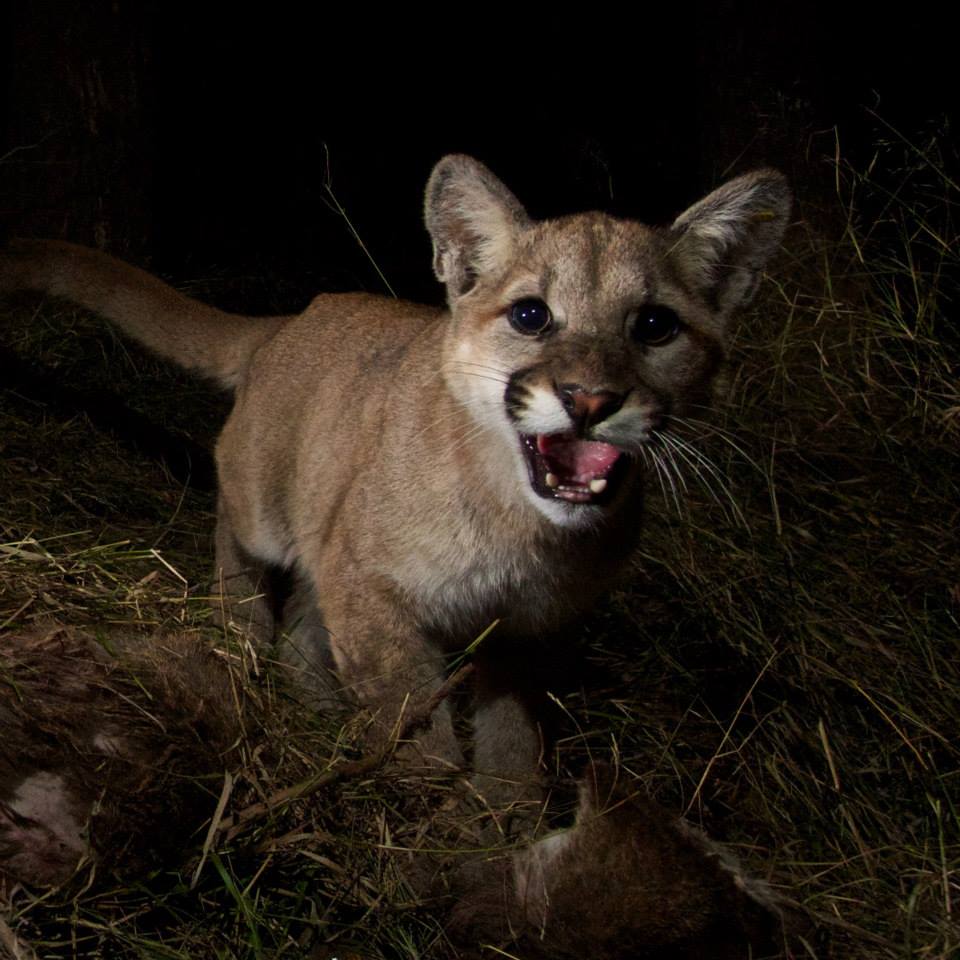Mountain Lion Family Feast Caught on Camera

With an adorably wrinkled nose, a mountain lion cub honed her hunting skills earlier this month on a dead mule deer caught by mom in California's Malibu Creek State Park.
The female mountain lion cub, called P-28 by wildlife biologists, tested her "kill bite" on the deer's neck, while her brother, dubbed P-30, attacked the rest of the carcass. A remotely activated camera captured the nighttime feast for researchers who are tracking the cougar family at the Santa Monica Mountains National Recreation Area. (Mountain lion and cougar are two names for the same animal.)
Biologists set up the DSLR camera at the deer kill site during the day, then recovered more than 350 images after the family finished feeding on the carcass, which took two days. [Images: Mountain Lion Family Feast]
The kittens seen in the pictures are about 10 months old and were tagged with trackers when they were three weeks old. Their mother, P-13, is wearing a GPS collar.
Mule deer are a popular menu item for Santa Monica mountain lions. The National Park Service has tracked more than 30 mountain lions in the Santa Monica Mountains since 2002, part of a long-term study monitoring the health of the cougar population here. Of the 400 kills discovered during the study, more than 95 percent have been mule deer, said park spokeswoman Kate Kuykendall.
Mountain lions are not an endangered species in California, and the Santa Monica park offers good habitat for the charismatic cats. The park's adult mountain lion population is currently estimated at 15 adults.
But the mountain lion group faces several long-term challenges to its survival, the ongoing study shows.
Sign up for the Live Science daily newsletter now
Get the world’s most fascinating discoveries delivered straight to your inbox.
The small population means there are too few adults for long-term genetic diversity, leading to in-breeding. Freeways, the ocean and agricultural development trap the cats in an island of habitat. Many cats lose their lives trying to cross local roads. Three local mountain lion kittens have been killed by vehicles in 2014.
"In the 12 years we've been studying these animals we've only had one successfully cross from the north to the south, bringing new genetic material," Kuykendall said.
The barriers to movement also mean young males can't strike out for new territory. The leading cause of death in the population is inter-species fighting, or lion-on-lion conflicts, Kuykendall said. "They are solitary and territorial animals," she said.
To increase genetic diversity and reduce deaths, the Park Service supports building a wildlife crossing near the Liberty Canyon exit along the 101 Freeway in Agoura Hills, Kuykendall said.
Email Becky Oskin or follow her @beckyoskin. Follow us @livescience, Facebook & Google+. Original article on Live Science.










